Elbow
Elbow Anatomy
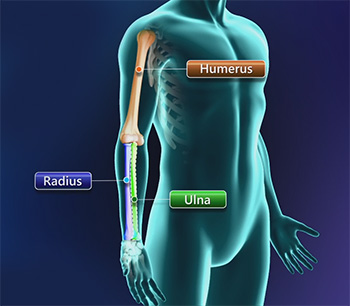
The elbow is a complex joint formed by the articulation of three bones –the humerus, radius and ulna. The elbow joint helps in bending or straightening of the arm to 180 degrees and assists in lifting or moving objects.
Conditions
Bicep Tendon Tear at Elbow
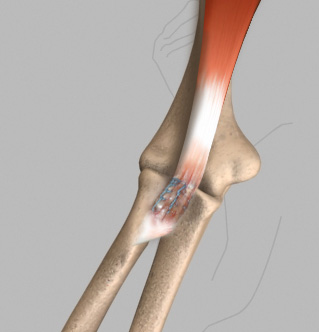
The biceps muscle, located in the front of the upper arm allows you to bend the elbow and rotate the arm. Biceps tendons attach the biceps muscle to the bones in the shoulder and in the elbow.
Elbow (Olecranon) Bursitis
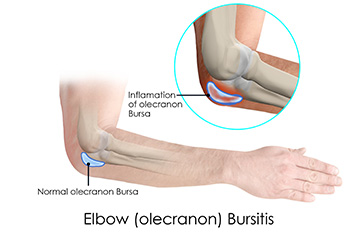
The elbow contains a large, curved, pointy bone at the back called the olecranon, which is covered by the olecranon bursa, a small fluid-filled sac that allows smooth movement between the bone and overlying skin. Inflammation of this bursa leads to a condition called olecranon bursitis.
Ulnar Nerve Entrapment (Cubital Tunnel Syndrome)
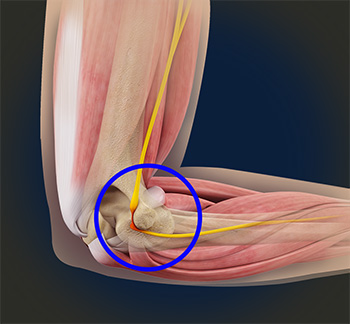
When the elbow is bent, the ulnar nerve can stretch and catch on the bony bump. When the ulnar nerve is compressed or entrapped, the nerve can tear and become inflamed leading to a variety of symptoms, called cubital tunnel syndrome.
Osteochondritis Dissecans
Osteochondritis dissecans is a joint condition in which a piece of cartilage, along with a thin layer of the bone separates from the end of the bone because of inadequate blood supply. The separated fragments are sometimes called “joint mice”. These fragments may be localized, or may detach and fall into the joint space causing pain and joint instability.
Elbow Sprain
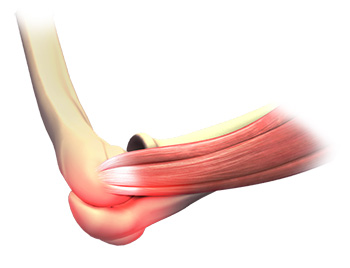
Elbow sprain is an injury to the soft tissues of the elbow. It is caused due to stretching or tearing (partial or full) of the ligaments which support the elbow joint. Ligaments are a group of fibrous tissues that connect one bone to another in the body.
Tennis Elbow
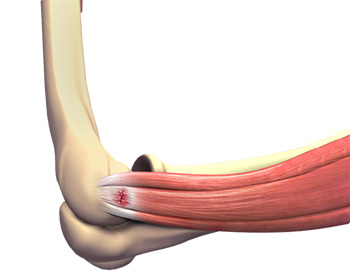
Tennis elbow is the common name used for the elbow condition called lateral epicondylitis. It is an overuse injury that causes inflammation of the tendons that attach to the bony prominence on the outside of the elbow (lateral epicondyle). It is a painful condition occurring from repeated muscle contractions at the forearm that leads to inflammation and micro tears in the tendons that attach to the lateral epicondyle
Golfer’s elbow
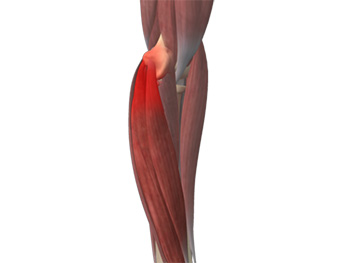
Golfer’s elbow, also called Medial Epicondylitis, is a painful condition occurring from repeated muscle contractions in the forearm that leads to inflammation and microtears in the tendons that attach to the medial epicondyle. The medial epicondyle is the bony prominence that is felt on the inside of the elbow.
Elbow Injuries
Fracture is a common injury to the elbow. Elbow fractures may result from a fall onto an outstretched wrist, a direct impact to the elbow or a twisting injury. Elbow fractures may cause severe pain, swelling, tenderness and painful movements. If a fracture is suspected, immediate intervention by your doctor is necessary.
Biceps Pain
Bicipital tendonitis is the inflammation of the biceps tendon, the tissue that connects muscle to bone in your upper arm, causing pain in the upper arm and shoulder. It is more common in men in the age group of 40 to 60 years and occurs during many sports activities like tennis, baseball, weightlifting and kayaking where overhead movement is involved.
Elbow Pain
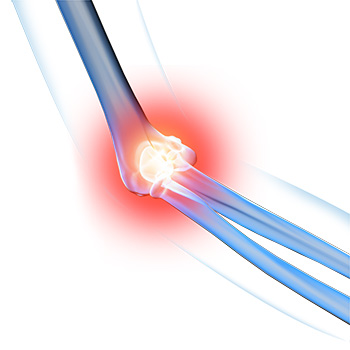
The elbow is a hinge joint made up of 3 bones – humerus, radius and ulna. The bones are held together by ligaments to provide stability to the joint. Muscles and tendons move the bones around each other and help in performing various activities.
Elbow Fractures
Three bones, the humerus, radius and ulna, make up the elbow joint. Elbow fractures may occur from trauma, resulting from various reasons; some of them being a fall on an outstretched arm, a direct blow to the elbow, or an abnormal twist to the joint beyond its functional limit.
Procedures
Total Elbow Replacement
Elbow Joint Replacement, also referred to as Total Elbow Arthroplasty is an operative procedure to treat the symptoms of arthritis that have not responded to non-surgical treatments.
Elbow Arthroscopy
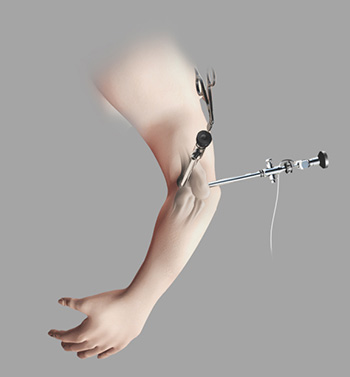
Elbow arthroscopy, also referred to as keyhole or minimally invasive surgery, is performed through tiny incisions to evaluate and treat several elbow conditions.
Elbow Ligament Reconstruction
Ligament reconstruction is considered in patients with ligament rupture. Your surgeon will make an incision over the elbow. Care is taken to move muscles, tendons and nerves out of the way. The donor tendon is harvested from either the forearm or below the knee. Your surgeon drills holes into the bones of the upper arm and the forearm, around the elbow joint. The donor tendon is inserted through the drilled holes in a pattern like that of the original ligament complex. The tendon is then attached to the bone surfaces with special sutures.
Elbow Tendon and Ligament Repair
The common symptoms of injury to the elbow joint and its surrounding structures include swelling and pain, which may extend from the elbow to the forearm and palm and be aggravated by movements of the wrist. Sometimes instability of the joint may also be seen.
The repair of the damaged tendon is broadly classified into two types- tendon debridement and tendon release.
Elbow Contracture
Elbow contracture refers to a stiff elbow with limited range of motion. It is a common complication following elbow surgery, fractures, dislocations, and burns.
Ulnar Nerve Decompression
Ulnar nerve decompression is a surgical procedure performed to relieve compression of the ulnar nerve as it passes through the elbow joint. A small incision is made on the inside of the elbow and the band of connective tissue that is constricting the ulnar nerve is incised. Removal of a small part of the bone and repositioning of the ulnar nerve may also be performed.
